Through extensive market research with prospective riders "about to join the motorcycle lifestyle," Kawasaki distilled top purchase considerations down to three points: fit, comfort, and confidence. The right bike had to fit the rider's size, put little stress on the body, and let them ride without fear of managing the motorcycle. Using these guidelines Kawasaki crafted the Vulcan S, a new kind of cruiser for the American market.
While most cruisers are traditionally designed to fit riders roughly 5-foot-6 to 6-0 feet, the Vulcan S broadens that best-fit range, practically doubling the number of people that can comfortably fit on the same bike. The key is “Ergo-Fit,” a system of adjustable components that change the seating position to suit riders of different sizes. There are two handlebar options, three seat options, and three footpeg positions, all chosen by the customer at the time of purchase and installed at no additional cost.
“Mid Reach” is the factory setting, with a bar-seat-peg configuration designed to fit riders 5-foot-7 to 6-0 feet. The “Reduced Reach” fit, for riders 5-foot-6 and under, puts the bars 1.4 inches closer, the seat 2 inches forward, and the pegs 1 inch closer. The “Extended Reach” fit, for riders 6-foot-1 and taller, moves the seat 1 inch back and the pegs 1 inch forward. I’m 5-foot-5 with long legs and a short torso, so reach to the bars is usually my weak point. I chose the Reduced Reach bars, Mid Reach seat, and Mid Reach pegs for our one-day test ride.
In addition to adjustable ergos, the Kawasaki design team focused on creating a narrow chassis. This came directly from observations of the typical American body mass index (BMI), which—let’s admit it—skews heavy. Thus the 27.8-inch seat height and tapered profile: A slim bike with a low seat makes it easier to reach the ground when your body is short and thick.
That emphasis on a slim chassis is also part of why the Vulcan S engine is derived from the Ninja 650 sportbike, instead of the Vulcan cruiser. The parallel twin’s engine cylinders are positioned farther forward than a conventional V-twin, which helped narrow the seat area and allowed the exhaust pipes to be routed under the engine and away from the rider’s legs.
The Ninja’s fuel-injected 649cc engine was also chosen for its light weight and smooth, manageable power. Tuning the camshaft profiles, intake funnel length, throttle body spacer, and air intake enhanced low- and mid-range performance. These changes, combined with a 28-percent increase in flywheel mass, ensure smooth acceleration and overall operation, and also make it easy to pull away at stops.
Our ride took us through city streets, freeway, and mountain roads around Santa Barbara, California. Kawasaki’s claims of nimble handling, aided by the lightweight chassis, low center of gravity, and centralized mass, are absolutely true. This is one of the lightest-steering cruisers I’ve ever ridden. Cornering requires surprisingly little effort on the bars, both at initial turn-in and while holding a line. The Vulcan is also very easy to manage in stop-and-go traffic.
The engine, as promised, is smooth and solid…if not very exciting. There is plenty of torque to pull you forward even at low revs, grunt when you need it for passing, and ample top end for cruising at freeway speeds. Power delivery is linear and builds gently across the rev range; good for riders who want an engine that won’t surprise them, though throttle response is slightly abrupt at low revs.
The suspension works well on smooth pavement, making the bike feel both planted and agile, but I found it a little harsh on some of the bumpier backroads, where I bounced around quite a bit in the seat. Rear preload was set at the second softest setting, which I expected to provide a cushier ride. The brakes are well matched to the drivetrain, with moderate initial bite and ample power when needed. The ABS was unobtrusive, even while braking on those lumpy sections.
As for the Ergo-Fit setup, my legs felt a bit stretched, so I swapped bikes with another rider for a different setup. I spent the second half of the day with Mid Reach bars, a Reduced Reach seat, and Reduced Reach pegs. At first I liked the slightly more upright seating position, but towards the end of the day, I found myself in pain, with my tailbone killing me. I’d recommend the Reduced Reach seat only if your legs are quite short (for reference, I have a 31-inch inseam).
I might have nailed the fit if I could have tried one more configuration (I’m thinking Reduced Reach bars, Mid Reach seat, and Reduced Reach pegs). All this begs the question: will your average rider, especially a new one, be able to assess proper fit simply by sitting on a bike in a showroom? It wasn’t until I rode the Vulcan S that I could tell whether the ergos worked for me. Dealer sales staff may need to be prepared to do some coaching—or perhaps Kawasaki could consider a test-fit program where customers can rent or borrow components before settling on a final configuration.
There’s no shortage of additional accessories to help the Vulcan S rider customize their new bike. Kawasaki has already developed quick-release windshields, saddlebags, and brackets for the touring rider, as well as an LED light bar, a DC power outlet, a gear position indicator, and a helmet lock. And when you’re ready to carry a passenger, you can add a rear seat, quick-release passenger backrest, and passenger pegs.
At a starting price of $6,999 ($7,399 with ABS), the Vulcan S is on par with other bikes in its class. Factor in the Ergo-Fit system at no extra charge, and this cruiser starts pulling away from the competition. Who knows—down the road, some kind of fit customization might become the norm, not the exception.











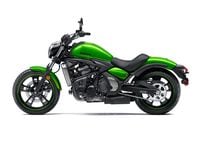
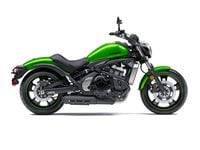
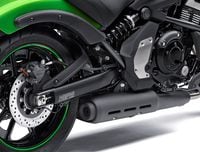
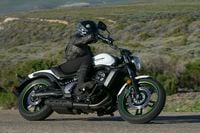


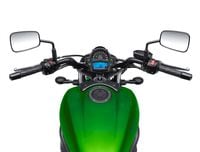

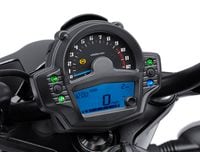

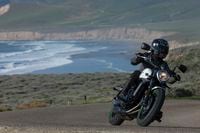

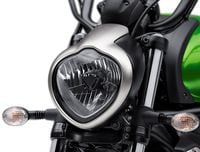
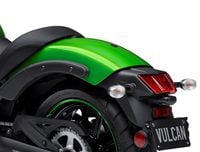
/cloudfront-us-east-1.images.arcpublishing.com/octane/7GJYDUIPXRGMTMQKN6ONYOLBOU.jpg)
/cloudfront-us-east-1.images.arcpublishing.com/octane/MUQLOVLL2ZDGFH25ILABNBXKTI.jpg)
/cloudfront-us-east-1.images.arcpublishing.com/octane/TNOU5DNE2BC57MFPMGN2EIDXAM.jpg)
/cloudfront-us-east-1.images.arcpublishing.com/octane/GTCXACQGJ5HAPDTGWUQKDEH44E.jpg)
/cloudfront-us-east-1.images.arcpublishing.com/octane/S35YGSEMEZB4BLTDJTSZPF4GLA.jpg)
/cloudfront-us-east-1.images.arcpublishing.com/octane/5UOT6HPX2JFMRJAX6EH45AR4MQ.jpg)
/cloudfront-us-east-1.images.arcpublishing.com/octane/OKWOJWAKP5EP3OACCRRWPCIX2Q.jpg)
/cloudfront-us-east-1.images.arcpublishing.com/octane/2WF3SCE3NFBQXLDNJM7KMXA45E.jpg)
/cloudfront-us-east-1.images.arcpublishing.com/octane/G4MG6OUCJNBSHIS2MVVOTPX65E.jpg)
/cloudfront-us-east-1.images.arcpublishing.com/octane/IIGGWFOTOJGB7DB6DGBXCCMTDY.jpg)
/cloudfront-us-east-1.images.arcpublishing.com/octane/QSTCM6AVEZA5JJBUXNIQ3DSOF4.jpg)
/cloudfront-us-east-1.images.arcpublishing.com/octane/U4I7G625B5DMLF2DVIJDFZVV6M.jpg)
/cloudfront-us-east-1.images.arcpublishing.com/octane/B6XD6LS6IVCQPIU6HXDJSM3FHY.jpg)
/cloudfront-us-east-1.images.arcpublishing.com/octane/ICL63FEDDRDTTMINYICCEYGMDA.jpg)
/cloudfront-us-east-1.images.arcpublishing.com/octane/FCGZHQXRBZFLBAPC5SDIQLVF4I.jpg)
/cloudfront-us-east-1.images.arcpublishing.com/octane/WNOB6LDOIFFHJKPSVIWDYUGOPM.jpg)

/cloudfront-us-east-1.images.arcpublishing.com/octane/X33NU3E525ECRHXLNUJN2FTRKI.jpg)
/cloudfront-us-east-1.images.arcpublishing.com/octane/6KKT5NNL2JAVBOXMZYS5ZO76YA.jpg)
/cloudfront-us-east-1.images.arcpublishing.com/octane/J5RKG5O455GMPGQRF2OG6LRT7A.jpg)
/cloudfront-us-east-1.images.arcpublishing.com/octane/GX2CIZKQVRH2TATDM26KFG2DAE.jpg)
/cloudfront-us-east-1.images.arcpublishing.com/octane/ZWIDYSAKQZHD5BHREMQILXJCGM.jpg)
/cloudfront-us-east-1.images.arcpublishing.com/octane/CYUHJZCTSJCH3MRAQEIKXK7SCQ.jpg)
/cloudfront-us-east-1.images.arcpublishing.com/octane/LKOFINY56FCXJCANJ5M7ZDQUBY.jpg)